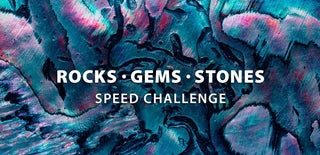Introduction: Constellation Stones
This instructable shows how to make glow in the dark stones for mapping out constellations. I did this project with my daughter. We both had a great time! I hope you enjoy as well.
I have also included instructions for optional glow in the dark chalk paint. I recommend printing out a free constellation booklet or cards for a complete learning activity to do with your young astronomer!
Supplies
For the "stars" (aka glow in the dark stones):
Stones (I used 20 but you can use more or less if you would like. Just make sure you have enough stones for the number of stars in the constellations you plan to map out)
2 oz bottle of white acrylic paint
2 oz bottle of glow in the dark acrylic paint
Newspaper
Wide, flat pain brush
Old tooth brush
Dish soap and water
Dish towel
For glow in the dark chalk paint:
Glow in the dark paint
Corn starch
Water
Cup
Brush
Step 1: Clean Stones
It is important to start off by cleaning rocks well. This will have a big impact on the quality of your final product so don't skimp on this step. Use old toothbrush, dish soap and water to remove all dirt from rocks. Dry with a dish towel and allow rocks to completely air dry before moving on to the painting step.
Step 2: Apply Primer Paint to Rocks
Using a wide, flat paintbrush apply white primer paint to rocks. A good primer base coat is important. Two coats of paint may be required.
Step 3: Apply Glow in the Dark Paint to Rocks
Using a wide, flat brush apply at least two coats (more coats of paint the better) of glow in the dark paint to each rock. Allow paint to fully dry between coats (approx 10 minutes depending on the thickness of the coat of paint).
Step 4: Make Glow Chalk Paint (optional)
Mix 1 tablespoon glow in the dark paint with four table spoons corn starch and 6 table spoons water. You may want to scale up recipe. This was enough paint to connect the stars for three of the constellations and write out the constellation names.
Step 5: Charge Constellation Stones
Allow constellation stones to sit out in a sunny area. The longer the stones are able to charge, the better. Direct sunlight is best. However, a very bright flashlight can also be used in a pinch to give the stones a short booster charge right before use.
Step 6: Have Fun Mapping Constellations!
You now have completed your constellation stones! Now it is time to enjoy them with your little astronomer! This is a great activity to take on a camping trip or just for a learning activity one night in the backyard at home.

Participated in the
Rocks, Gems, and Stones Speed Challenge









